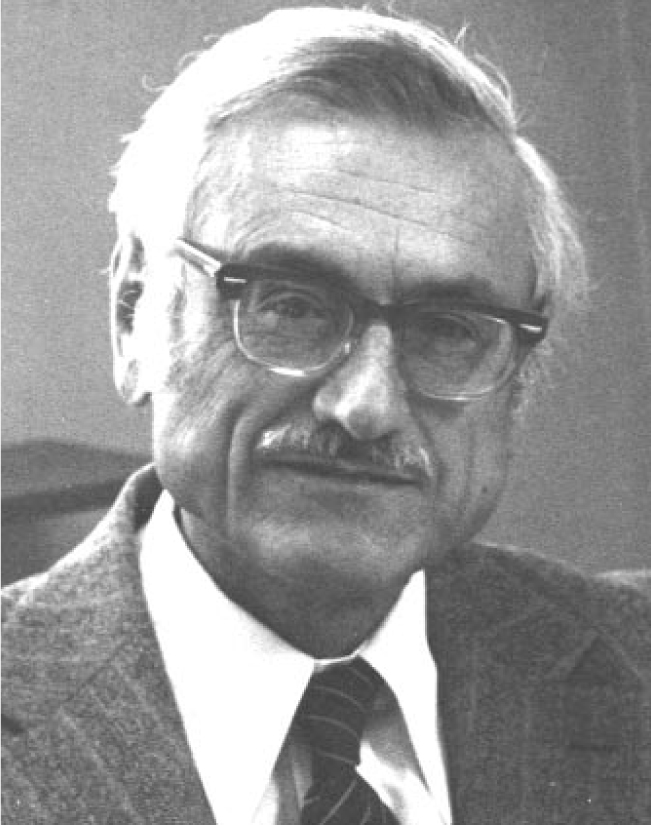Bela Adalbert Lengyel
DOI: 10.1063/1.1583546
Bela Adalbert Lengyel, founding chair of the department of physics and astronomy at California State University, Northridge, and author of the first published book on lasers, died in an assisted care facility in Irvine, California, on 31 October 2002.
Lengyel was born 5 October 1910 in Budapest, Hungary. He attended Pazmany University (later renamed Roland Eötvös University) in Budapest and, in 1933, obtained a teacher’s certification in mathematics and physics for secondary schools. In 1935, he received his PhD in mathematics from the Pazmany University in Budapest. He developed his thesis, which contributed to the theory of linear operators, essentially independently, with only occasional guidance from John von Neumann, who was at Princeton University but visited Budapest about twice a year.
During 1935–36, Lengyel studied mathematics at Harvard University with Marshall Stone. He also studied physics there with Edwin Kemble and helped with the writing of Kemble’s book, The Fundamental Principles of Quantum Mechanics, With Elementary Applications (McGraw-Hill, 1937). Lengyel spent the following year in Hungary, where he worked on practical problems in actuarial mathematics and statistical sampling theory with applications of those methods to medicine. He then emigrated to the US and taught mathematics at the Rensselaer Polytechnic Institute. He later held various appointments at Brown University, City College of New York, and the University of Rochester.
In 1946, Lengyel left academia to become a physicist at the Naval Research Laboratory in Washington, DC, where he worked on problems in microwave optics and sonar. He moved to California in 1952 and joined Hughes Research Laboratories. The next 11 years at Hughes were among the most productive of his scientific career and climaxed in the excitement of Theodore Maiman’s development of the laser in the spring of 1960.
Lengyel undertook the task of assimilating the rapidly accumulating literature and began writing his first monograph on lasers in the spring of 1962. By June, he had finished the first draft of Lasers: Generation of Light by Stimulated Emission , which was published six months later (by Wiley). Even though the book was a modest volume of 125 pages, Lengyel became a celebrity because no other organized source of information on the new technology existed. Also, the book was exceptionally well written; he had provided simple explanations that most physicists could follow. Typical of Lengyel, he acknowledged Kemble for teaching him the craft of scientific book writing.
When the swift development of the laser field tended to make his first book obsolete, he started on a second one in 1963, followed by a third in 1971. His most important scientific contribution to the field of lasers was the development of a simple model of the pulse process in the ruby laser; he presented his findings at the Third International Conference on Quantum Electronics in Paris in 1963.
In the fall of that year, Lengyel returned to academic life. He was named chair of the newly formed physics department at San Fernando Valley State College (later renamed California State University, Northridge). As important as his scientific contributions were, it was his unsurpassed skill at fostering an academic climate that won him acclaim at CSUN. Lengyel was a theorist who deeply appreciated that physics is an experimental science. Through his commitment to honesty and ethics in teaching and research, he set the tone for the department, a tone that has prevailed today. He firmly believed that if students were not learning, then professors needed to look to themselves for the solution. I once complained that there was not enough time to cover all of the essential physics during a semester. He answered simply, “You have to work.”
In 1964, Lengyel joined the Institute of Quantum Chemistry of the University of Uppsala, Sweden. He was a research associate and also served as acting director of the institute for four months during his 14-month stay.
Lengyel remained chair at CSUN until 1970 and continued to teach until he retired in 1977. He then served as a consultant on lasers for numerous high-tech firms in Orange County, California, and was called on as an expert witness in the prolonged litigation pertaining to the invention of lasers.
A very serious individual, Lengyel nevertheless possessed a keen sense of humor. I am certain that, in my presence, he never used a pun and very rarely used a cliché. He was a strict taskmaster, intolerant of dereliction or malfeasance, yet was compassionate toward those in need and tolerant of new views and values. His reputation as a no-nonsense administrator earned him the faculty’s intense respect.
I once asked him which he enjoyed more—research, teaching, learning new areas of physics, practical applications, or administration. He answered simply, “Yes.” Those who knew him only in the professional sphere thought of him as a scholar, teacher, and administrator extraordinaire. Those who were closer to him were treated to a spirit who pursued life in all of its beauty. He spoke four languages fluently and enjoyed gardening. He was very busy, but made time to swim, ski, camp, hike, and travel (he even went on a burro trip) with his children and his wife. He was a loving father and husband. My own remembrance of Bela is encapsulated in the Ralph Waldo Emerson quote, “The purpose of life is not to be happy. It is to be useful, to be honorable, to be compassionate, to have it make some difference that you have lived and lived well.”


More about the Authors
Barney Bales. California State University, Northridge, US .




